The Mensa constellation is located in the far south. It is the most southerly constellation after Octans, which contains the south celestial pole. Mensa is a relatively new constellation. It was not one of the classical Greek constellations introduced by Ptolemy in the 2nd century. This constellation was created by French astronomer Nicolas-Louis de Lacaille in the 18th century.
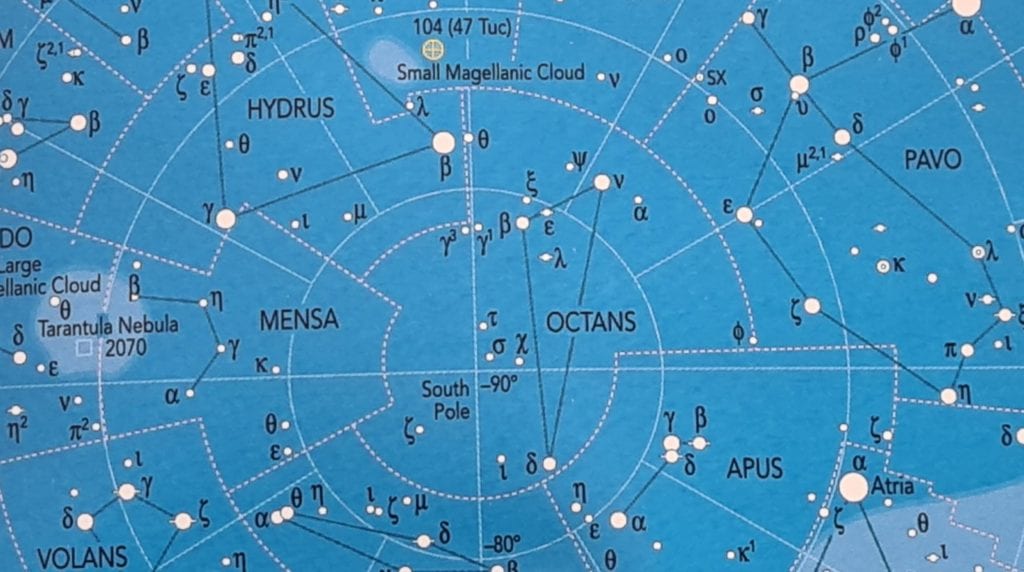
It is recognized by the International Astronomical Union (IAU) as one of the 88 modern constellations that we have. Mensa ranks as the 75th largest constellation covering an area of 153.5 square degrees. Overall, that is 0.372% of our night sky. In 1922, the IAU adopted a three-letter abbreviation for every constellation. They approved the short form Men for Mensa. The genitive for it is Mensae.
We cannot see many bright stars in Mensa. In fact, it is the only constellation with no stars of apparent magnitude 5.0 or above. Its brightest star is the 5.09-magnitude Alpha Mensae. After it is Gamma Mensae which has an apparent magnitude of 5.19.
Notable Objects
The most notable deep-sky object in this constellation is the Nubecula Major or the Large Magellanic Cloud (LMC). A portion of this galaxy is in Mensa while most of it lies in the Dorado constellation. Other celestial objects within the borders of Mensa include the star cluster NGC 1987 and the quasar PKS 0637-752. It does not contain any Messier object. More than two of its stars host extrasolar planets. The meteor shower Delta Mensids is associated with this constellation.
Since Mensa is not a Greek constellation, no mythological stories will tell us how it came to be in our night sky. However, Table Mountain has many interesting stories and legends that are just as interesting. The Large Magellanic Cloud is also mentioned in these myths.
Mensa is part of the Lacaille family of constellations.
- Antlia (the Air Pump)
- Caelum (the Engraving Tool)
- Circinus (the Drawing Compass)
- Fornax (the Furnace)
- Horologium (the Clock)
- Microscopium (the Microscope)
- Norma (the Carpenter’s Square)
- Octans (the Octant)
- Pictor (the Painter’s Easel)
- Reticulum (the Reticle)
- Sculptor (the Sculptor)
- Telescopium (the Telescope)
This group is named so because they were charted by Nicolas-Louis de Lacaille himself. He created a total of 14 constellations. Thirteen of them belong in this family. The other one, Pyxis (the Mariner’s Compass), belongs to the Heavenly Waters family.
What’s In A Name?

The name Mensa means “table” in Latin. Nicolas-Louis de Lacaille initially called this constellation Montagne de la Table when he created it. It was later Latinized into Mons Mensae. The shorter name Mensa as we know it now was suggested by John Herschel. Francis Baily adopted it in 1845.
The inspiration behind this modern constellation is Table Mountain, a famous landmark in Cape Town. Lacaille was at the Cape of Good Hope (in present-day South Africa) from 1750 to 1754 to study and observe the southern sky. During his stay, he observed thousands of southern stars, nebulous objects, and many others. His southern catalogue was published after his death. It was called Coelum Australe Stelliferum. The catalogue contained 14 new constellations. They were named after scientific instruments except for Mensa.
Lacaille’s observatory was located on the banks of Table Bay, its name also referencing the flat-topped Table Mountain. This mountain was a fixture in his stay at the Cape that Lacaille made it the only constellation that he named after a land feature.
Aside from its prominent flatness, the Table Mountain is covered by orographic clouds most of the time. People often call it its “tablecloth.” Lacaille related it to Mensa with the Large Magellanic Cloud. This galaxy is often seen as the tablecloth of the Mensa constellation, just like clouds of the Table Mountain!
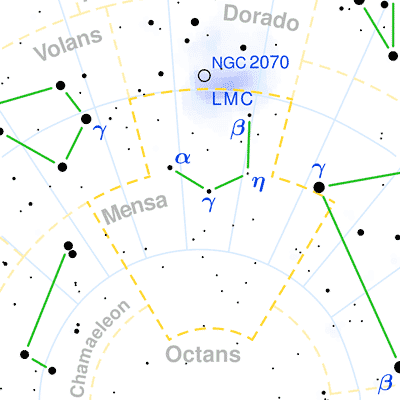
What Does Mensa Look Like?
Mensa is enclosed in the borders of an eight-segment polygon. It was set in 1930 by Eugène Delporte, a Belgian astronomer. Its boundaries look like a keystone-shaped wedge.
The constellation outline is made up of three lines. They connect the four main stars of Mensa. These are Alpha Mensae, Gamma Mensae, Beta Mensae, and Eta Mensae. We can easily make out the eponymous flat-topped mountain in this simple form.
Where To See the Mensa Constellation
We already learned that Mensa is in the southern sky. Specifically, it lies in the first quadrant of the southern hemisphere (SQ1) at about 6 hours right ascension and -80° declination. It is visible to observers at latitudes between +4° and −90°.
The celestial Table Mountain cannot be seen in most parts of the northern hemisphere. It is only fully visible to observers south of the 5th parallel north (5°N).
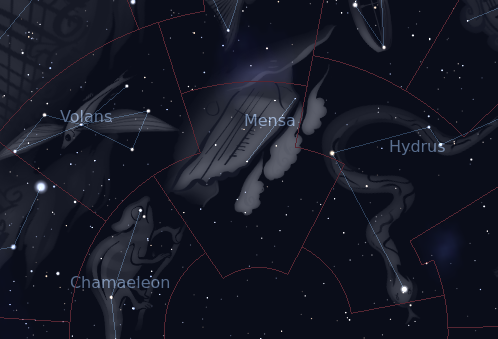
Mensa and Its Neighbors
Mensa is surrounded by five other southern constellations. The south celestial pole in the constellation of Octans (the Octant) is located south of it. To its north is Dorado (the Swordfish). Hydrus (the Male Water Snake) is located on the west and northwest side. We can see Chamaeleon (the Chameleon) east of Mensa while Volans (the Flying Fish), above it, is to the northeast.
The northern part of Mensa is blanketed by the Large Magellanic Cloud. It is a satellite galaxy of our Milky Way. It looks like a “faint cloud” to us observers. We can use this “cloud” to guide our way towards the sky’s version of Table Mountain.
When To See the Mensa Constellation
Mensa is circumpolar in most parts of the southern hemisphere because of its location, close to the south celestial pole. When a constellation is circumpolar, that means it is visible all the time in the night sky.
However, just like other constellations, the best time to see it is when it appears highest in the sky. It can be seen during the winter months in the northern hemisphere. During that time, it is summertime below the equator, around December to February.
The best time to see Mensa is during the first month of the year, in January, at about 9 pm.
Mensa and Its Stars
Eleven stars in the constellation of Mensa were assigned Bayer designations by Lacaille. Even though Mensa does not contain exceptionally bright stars, Gould added five more to these designations. He thought that they deserved to be named because of their close position to the South Celestial Pole.
One of the stars in this constellation was given a name approved by the IAU. It was named Bubup.
1. Alpha Mensae (α Mensae)
Alpha Mensae is a G-type star that is the brightest star in the constellation of Mensa. However, with an apparent magnitude of 5.09, it is the dimmest lucida in our night sky. A lucida is the brightest star in a constellation.
The stellar classification of this main-sequence star is G5 V. It is estimated to be 5.4 billion years of age. It has about the same mass as our Sun and has 99% the solar radius. This yellow-hued star radiates 0.819 times the solar luminosity. It has a red dwarf companion separated at 3.05 arcseconds. Alpha Mensae is roughly 33 light-years away from the Sun.
2. Beta Mensae (β Mensae)
Beta Mensae is another yellow-hued star. It belongs to the spectral class G8 III. With an apparent magnitude of 5.31, it is the third brightest star in Mensa. It is 3.58 times as massive as the Sun. Its radius equates to about 26 times the solar radius. It radiates with the luminosity of approximately 345 Suns.
Beta Mensae is located near the Large Magellanic Cloud. It lies about 790 light-years away from us.
3. Gamma Mensae (γ Mensae)
Gamma Mensae is probably a double star with an apparent magnitude of 5.19. It is the second brightest star in this Table Mountain-inspired constellation. The visible component of this system is a giant star with a stellar classification of K2 III. It is 1.04 times as massive as the Sun and 21 times more luminous. This system is roughly 102 light-years away from our planet.
4. Delta Mensae (δ Mensae)
Delta Mensae is a multiple-star system with an apparent magnitude of 5.69. Its primary component is an orange-hued star. It belongs to the stellar class K2/3 III. Its radius measures about 14 times greater than that of the Sun’s. It radiates with the luminosity of 92 Suns. It is approximately 420 light-years distant.
5. Epsilon Mensae (ε Mensae)
Epsilon Mensae is a K-type star of 5.5 apparent magnitude. Its stellar classification is K2/3 III. It is 1.16 times as massive as the Sun. Its radius is about 23 times greater than our yellow star. It is approximately 454 light-years away from Earth.
6. Zeta Mensae (ζ Mensae)
Zeta Mensae is a white-hued giant star. It has an apparent magnitude of 5.64, belonging to the stellar class A5 III. Since it is a fast spinner, this star has an oblate shape. It is more luminous than the Sun by about 69 times.
In 1995, Zeta Mensae was listed as a candidate member of the IC 2391 supercluster. It is approximately 413.91 light-years away.
7. Eta Mensae (η Mensae)
Eta Mensae is a K-type giant star. With an apparent magnitude of 5.47, we can see it faintly with the naked eye. Its stellar classification is K4 III/K6III. This star is believed to be surrounded by circumstellar dust.
Eta Mensae is likely a member of the near open cluster of the Hyades. Its estimated distance from us is 670 light-years.
8. Theta Mensae (θ Mensae)
Theta Mensae is a main-sequence star with an apparent magnitude of 5.45. It has a blue-white hue since it is in the stellar class B9.5V. It is about 356 light-years away from us.
9. Iota Mensae (ι Mensae)
Iota Mensae is a solitary star. Its mass equates to 3.7 times the solar mass. Its stellar classification is B8III. The radius of this blue-white star is 2.9 times that of the Sun’s. Its apparent magnitude varies between 6.00 – 6.05 in a period of 5.3 days. Its variability is a result of its rotation. Iota Mensae is located about 880 light-years from us.
10. Kappa Mensae (κ Mensae)
Kappa Mensae is a main-sequence star of spectral type B9.5V. It is in the Milky Way galaxy. This blue-white hued star has an apparent magnitude of 5.46. It is approximately 285.11 light-years away.
11. Lambda Mensae (λ Mensae)
Lambda Mensae is an evolved giant star. It belongs in the stellar class K0 III. Its apparent magnitude is 6.53, which makes it the 24th brightest star in the constellation of Mensa. We can see it with the naked eye but we would need a dark rural sky to do so.
This is a red clump star with a radius that is about 10 times that of the Sun’s. It radiates with the luminosity of 54 Suns. Lambda Mensae is about 466.7 light-years distant.
12. Mu Mensae (μ Mensae)
Mu Mensae is a B-type star with an apparent magnitude of 5.54. That magnitude declines by about 0.09 because of interstellar dust. This blue-white hued star features characteristics of both giant and a bright giant. It is shown in its stellar classification B8 II-III(p Si). This class also indicates its overabundance of silicon.
The radius of Mu Mensae is 3.3 times the solar radius. It radiates with a luminosity that is 216 times greater than our Sun’s. It is approximately 477 light-years away from us.
13. Xi Mensae (ξ Mensae)
Xi Mensae is a solitary star that has a yellow-orange hue. It is a giant star that is already aging. It belongs in the stellar class G8/K0III. We can see it faintly with the naked eye as its apparent magnitude is 5.84.
This star is nearly twice as massive as the Sun, radiating at 50.3 solar luminosities. It is roughly 366 light-years away from our planet.
14. Pi Mensae (π Mensae)
Pi Mensae is a yellow-hued star of spectral type G0 V. It is designated HD 39091 in the Henry Draper Catalogue. Its apparent magnitude is 5.67 so it is faintly visible to the naked eye. Its mass is about 1.11 times the solar mass and its radius is 1.15 times greater. It is more luminous by about 1.532 times.
Two extrasolar planets were discovered around this star. This planetary system is about 60 light-years away.
15. TZ Mensae
TZ Mensae is a binary star system with main-sequence star components. One of the stars has a stellar classification of A0V. It is 2.5 times as massive as the Sun. The other component is spectral type A8V. Its mass equates to 1.5 times that solar mass. They are an eclipsing binary with an apparent magnitude that varies between 6.2 and 6.9.
16. TU Mensae
TU Mensae is a close binary which is a cataclysmic variable. This system is composed of a white dwarf and an M4V-spectral type red dwarf. Because of their closeness, the white dwarf strips material from the low mass star. The system periodically brightens because of this. Its apparent magnitude is 18.6 during periods of inactivity but it increases to up to 11.8 during outbursts.
It takes 2 hours 49 minutes for the two stars to orbit each other. This star system is approximately 910 light-years distant.
17. AO Mensae
AO Mensae is a variable star that is not visible to the naked eye. Its apparent magnitude varies from 9.96 to 10.18. It has a stellar classification of K4Ve. It is lesser than the Sun in terms of mass, radius, and luminosity.
This star is a member of a moving group of stars called the Beta Pictoris moving group. It lies at a distance of 128 light-years.
18. W Mensae
W Mensae is a supergiant star. It is on the southern edge of the Large Magellanic Cloud in Mensa constellation. This star radiates at 7,700 solar luminosities but its apparent magnitude is only about 13.8. It is an R Coronae Borealis variable. This class is also called “inverse novae.” The variable nature of W Mensae was discovered by W. J. Luyten in 1927.
This star is very distant, located about 168,000 light-years away from our planet.
19. HD 268835
HD 268835 is a hypergiant, a star with high luminosity, size, and mass. It is in the Large Magellanic Cloud. It is circled by a great mass of dust disks.
20. HD 39194
HD 39194 is a K-type star with an apparent magnitude of 8.08. It belongs to the spectral class K0V. It is located approximately 86.21 light-years from our solar system. HD 39194 hosts three exoplanets.
21. Bubup (HD 38283)
Bubup is a 6.70-magnitude white-hued star. We cannot see it with the naked eye but we can spot it using binoculars. Its spectral type is F9.5V.
This star was designated HD 38283 in the Henry Draper catalogue. Its official name was approved by the IAU in 2019. It has its origin from the Aboriginal Australians of Boon wurrung, where “Bubup” means “child.”
An extrasolar planet was discovered around this star in 2011. This planetary system is estimated to be 124 light-years away.
Planets in the Table Mountain’s Constellation
Three stars in the constellation of Mensa were discovered to host planets. Pi Mensae was believed to have two exoplanets. However, in 2020, Pi Mensae b (also HD 39091 b) was confirmed to be a brown dwarf. The star HD 39194 has three exoplanets.
Pi Mensae c
Pi Mensa c (also HD 39091 c) is a gas giant just like Neptune. Its mass equates to 4.82 Earths. This Neptune-like planet is 0.06839 AU from the star in its planetary system. It completes an orbit around this star in a period of 6.3 days.
HD 38283 b
HD 38283 b is a giant planet. Since its F-type star is formally named Bubup, this exoplanet is also called Bubup b. It has a mass of 0.4 Jupiters. It is 1.02 AU from its white-hued star and orbits it in 363.2 days. This giant planet is in the habitable zone. The name approved by the IAU for this gas giant is Yanyan.
HD 39194 b
HD 39194 b is one of the three exoplanets around the K-type star HD 39194. Its mass is 3.72 Earths. It is 0.0519 AU from the star and orbits in a period of 5.64 days.
HD 39194 c
HD 39194 c is the most massive of the three exoplanets in the planetary system where it belongs. It is as massive as 5.94 Earths. It completes an orbit around the star in 14.03 days.
HD 39194 d
HD 39194 d has a mass of 5.15 Earths. It is 0.1720 AU from its star, with an orbital period of 33.9. It was discovered in 2011 through the radial velocity method.
Deep-sky Objects in Mensa Constellation
Part of the Large Magellanic Cloud is in this constellation. Mensa has some star clusters and galaxies. Another object found in this constellation is a distant quasar called PKS 0637-752.
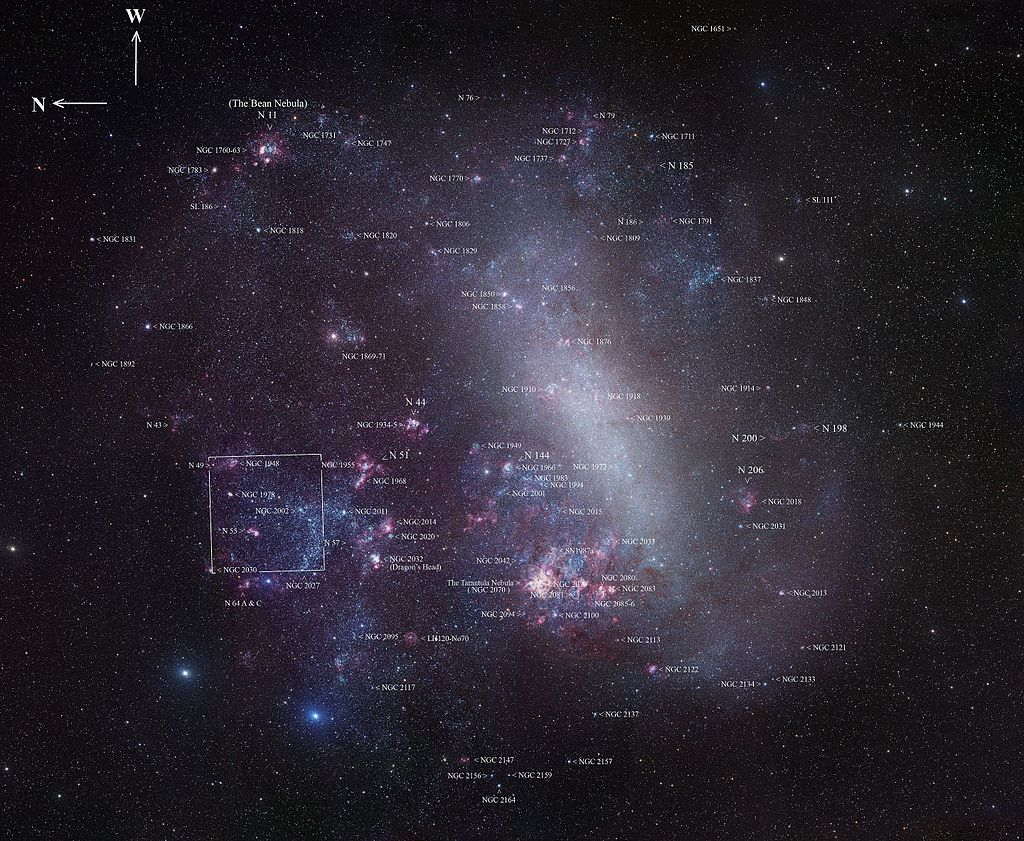
Large Magellanic Cloud
The Large Magellanic Cloud (LMC) is 14,000 light-years in diameter. It is bigger than the Milky Way and is considered the fourth largest in the Local Group. The bigger galaxies in the group are the Milky Way, the Andromeda Galaxy, and the Triangulum Galaxy (M33).
This galaxy is about 160,000 light-years from us. Even with that said, it is the second (or third) closest galaxy to our own Milky Way. Other ones on the list include the Sagittarius Dwarf Spheroidal Galaxy and Canis Major Dwarf Galaxy.
The LMC and the Milky Way galaxies will collide in roughly 2.4 billion years.
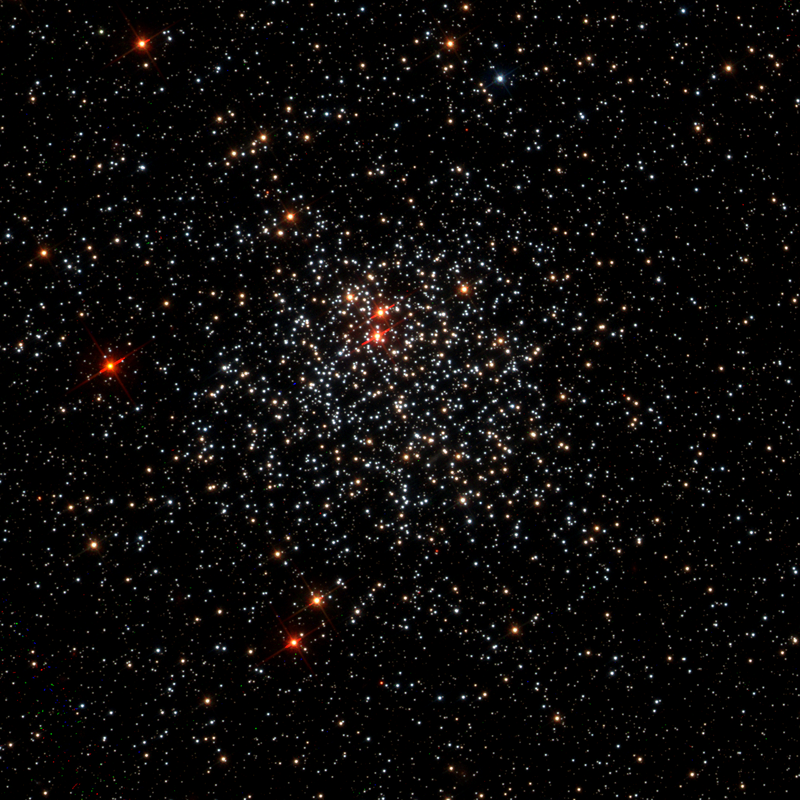
NGC 1987
NGC 1987 is a globular cluster that is in the Large Magellanic Cloud. Its visual magnitude is 12.1. John Herschel discovered this deep-sky object on November 3, 1834.
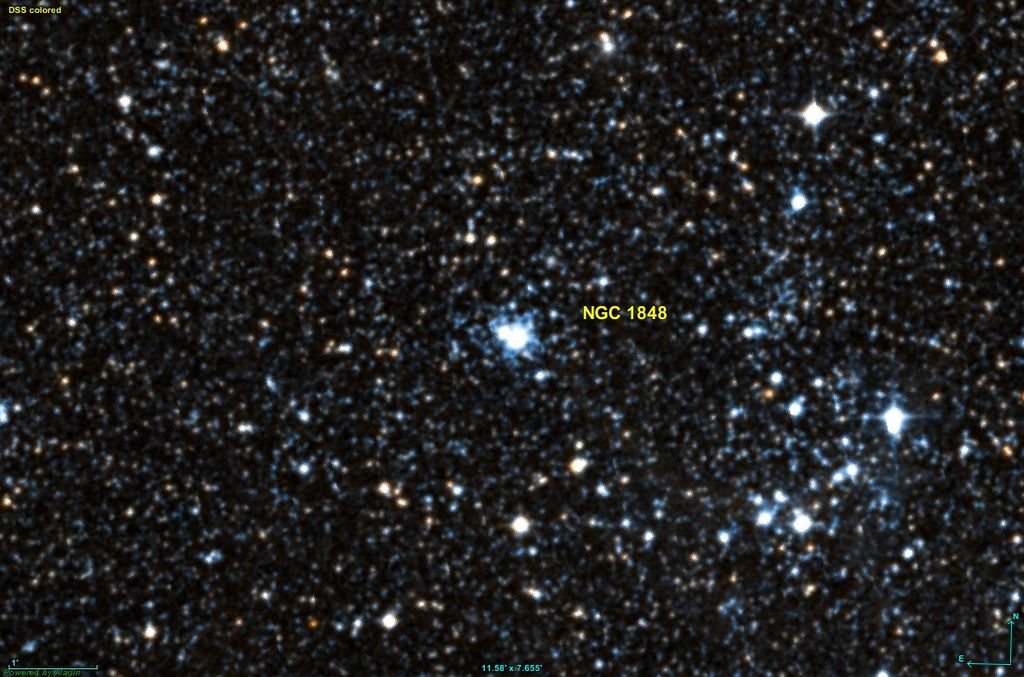
NGC 1848
NGC 1848 is an open cluster that is around 27 million years old. This star cluster is not very dense. It was discovered in 1834 by astronomer John Herschel.
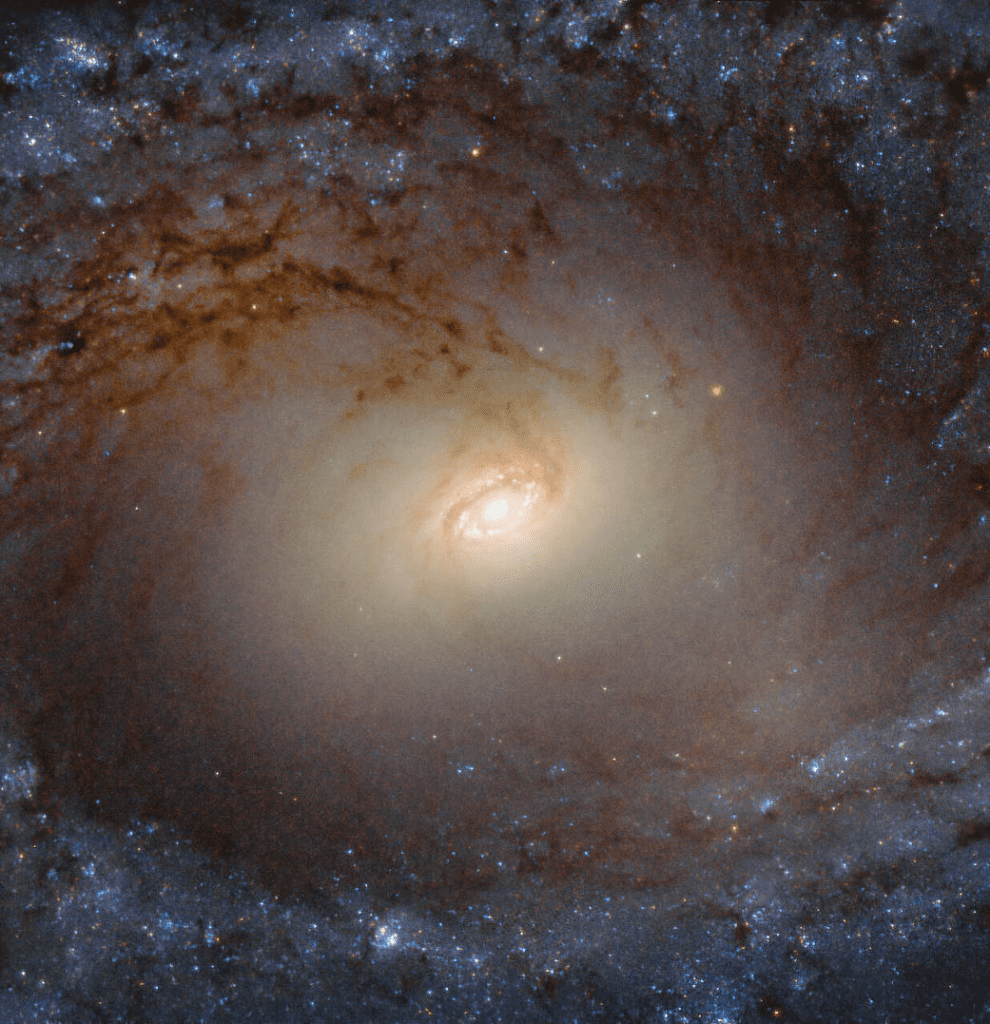
IC 2051
IC 2051 is a spiral galaxy approximately 85 million light-years away. Its most notable features are its pinwheeling arms and its central bar. It was a famous celestial object for studying galactic bulges. A galactic bulge is the central region of a spiral galaxy.
Meteor Showers Related to Mensa
The only meteor shower associated with the constellation of Mensa is Delta Mensids. This shower dates from March 14 to 21, with its peak on March 18. The hourly rate is Delta Mensids is 1 to 2 meteors. These particles travel at a speed/velocity of 33 km/s.
Mythology Related to Mensa Constellation
There are no direct mythological stories that will tell us how Mensa earned its place in our sky. But, the inspiration behind this constellation is surrounded by many stories and legends. Let us learn about the tales that surround the well-known Table Mountain.
The Dutchman’s Wager
The Devil’s Peak is located on the side of Table Mountain. This is a story about how the peak got its name. It also tells an interesting tale of the origin of the tablecloth-like clouds that cover the flat-topped mountain.
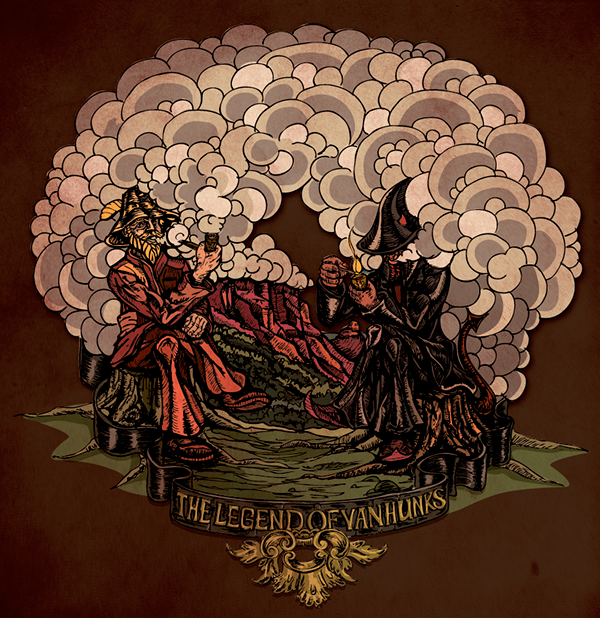
Jan van Hunks was a Dutchman who lived at the foot of the mountain. He was a heavy pipe smoker. His wife did not approve of this so she would tell him to go out of the house and smoke his pipe elsewhere.
One time, while Van Hunks was smoking on the mountain when he came across a stranger. The stranger was also smoking the pipe. The two men bragged about their smoking habits. They bragged and bragged until they decided to settle things by having a pipe-smoking contest. This contest would prove who the better smoker is.
Van Hunks won the contest but little did he know that the stranger was actually the devil. When the contest ended, the mountain was covered by so much smoke that it looked like a tablecloth covering it.
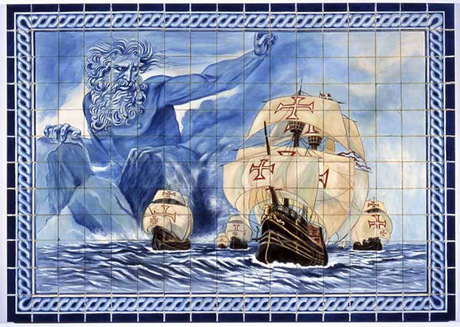
The Myth of Adamastor
This story was told by the Portuguese poet Luis Vaz de Camoes.
Adamastor was a mythical monster that was in exile because he wanted to overthrow the gods. He tormented every ship that sailed his way. One day, the fleet of Vasco da Gama was headed to the Cape. Suddenly, a dark cloud (said to be the Large Magellanic Cloud) of a human-like figure loomed over the ship and terrorized the voyagers. The gods heard about this and punished Adamastor. He was turned into a mountain at Cape Point to forever guard the southern seas.
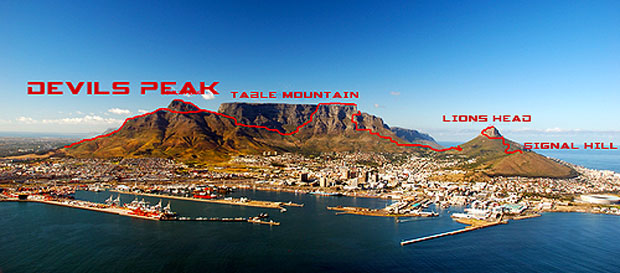
The Legend of Umlindi Wemingizimu
This is a famous African legend that tells us about the creation of Table Mountain.
Tixo is the Sun god and the goddess of the Earth is Djobela. They bore a child and named him Qamata.
Qamata was responsible for the creation of the world, where he formed land over the oceans. But not everyone was happy with this. The Great Dragon of the Sea called Nganyamba fought Qamata to stop his creation. They fought and fought which, unfortunately, crippled the god.
Qamata could not protect his land anymore from Nganyamba who wanted to destroy it. Djobela, his mother felt sorry for her son and so he created four giants. These giants would soon become the protector of the Earth in each of its four corners, in the north, west, east, and south. The strongest and mightiest of these giants is Umlindi Wemingizimu. The goddess assigned him to guard the south at its gateway, which is now Cape Town.
Nganyamba was still wreaking havoc so the giants had to fight him. The Great Dragon of the Sea was so powerful that he badly injured the giants. Even in their last moments, they remained true to their purpose. They asked the earth goddess to turn them into mountains so that they could still watch over the world even if they die.
Djobela heard their pleas and granted it. Umlindi Wemingizimu, the greatest among the giants, became what we call now Table Mountain. He is also known as the “Watcher of the South.
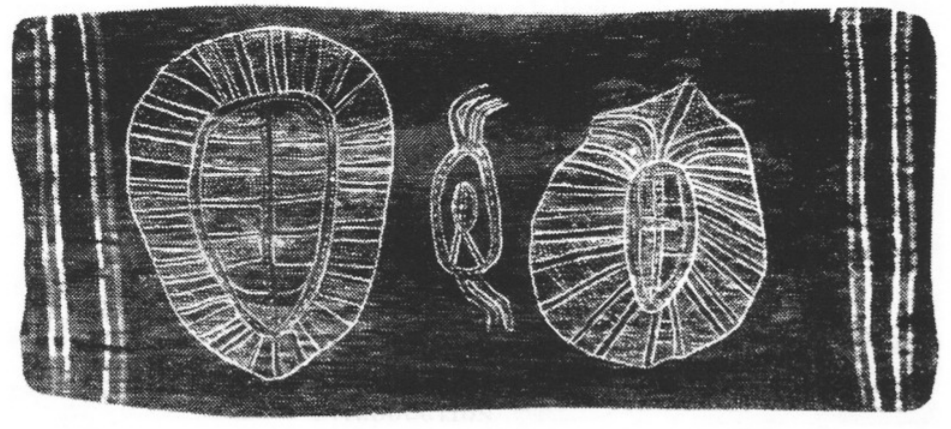
The Magellanic Clouds as Campsites of the Sky People
The Magellanic Clouds are also called Nubeculae Magellani. There are two of them, the Small Magellanic Cloud and the Large Magellanic Cloud. These two galaxies are orbiting the Milky Way. The Large Magellanic Cloud is a defining part of the constellation of Mensa. An Australian Aboriginal story tells us something about it. Most importantly, it uses the celestial objects to teach compassion for older people.
The Magellanic Clouds were the campsite of sky people. An old couple called Jukara lived in them. The old man was camped in the Large Magellanic Cloud. The Small Magellanic Cloud was his wife’s. They had become so weak that they could not feed themselves.
The other star people heard about their situation and were compassionate towards them. They caught fish and lily bulbs from the sky river, the Milky Way. After that, the sky people would bring the food for the couple and cook it on their fire. A star called Agnura was between the two campsites. It served as their cooking fire.
Looking at the image of a bark painting above, the Large Magellanic Cloud is at the left and the Small Magellanic Cloud is at the right. Between these camps of the Jukara is the star Agnura, their cooking fire. The star Agnura is Achernar (Alpha Eridani), the brightest star in the constellation of Eridanus.